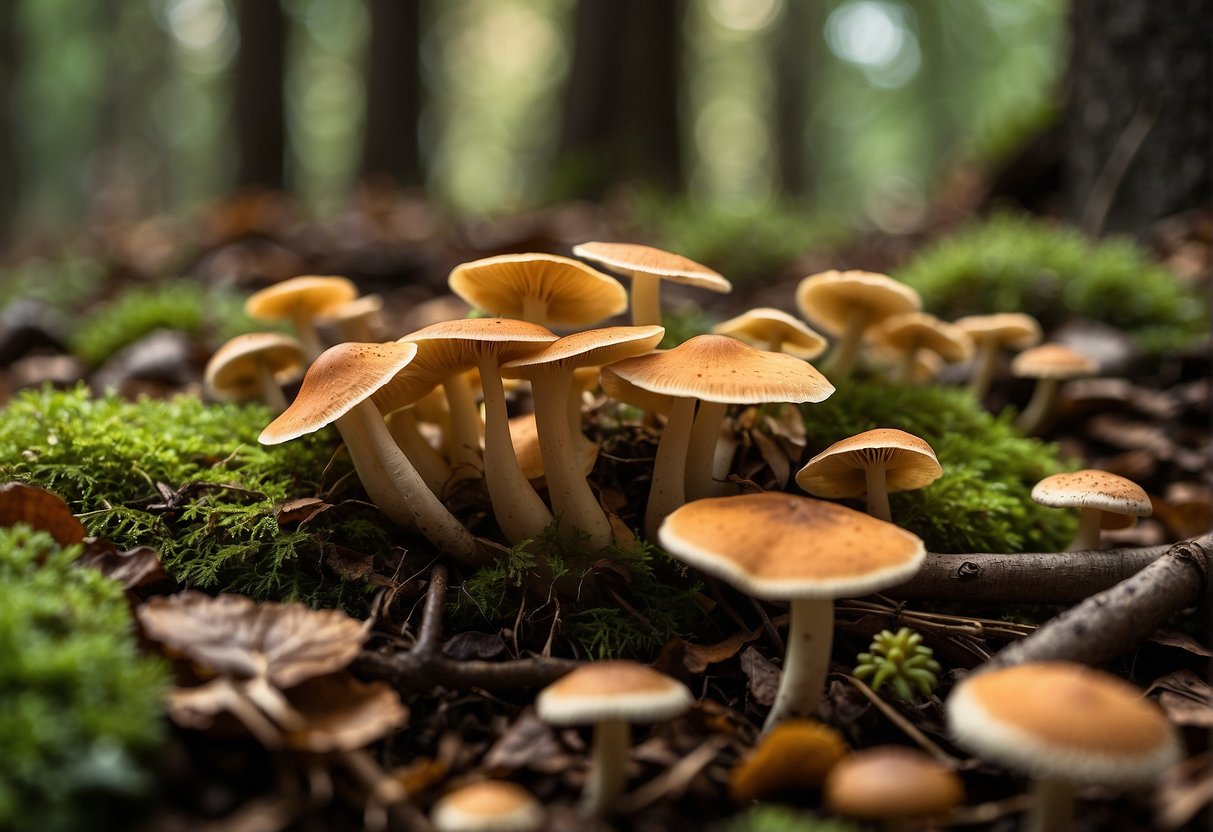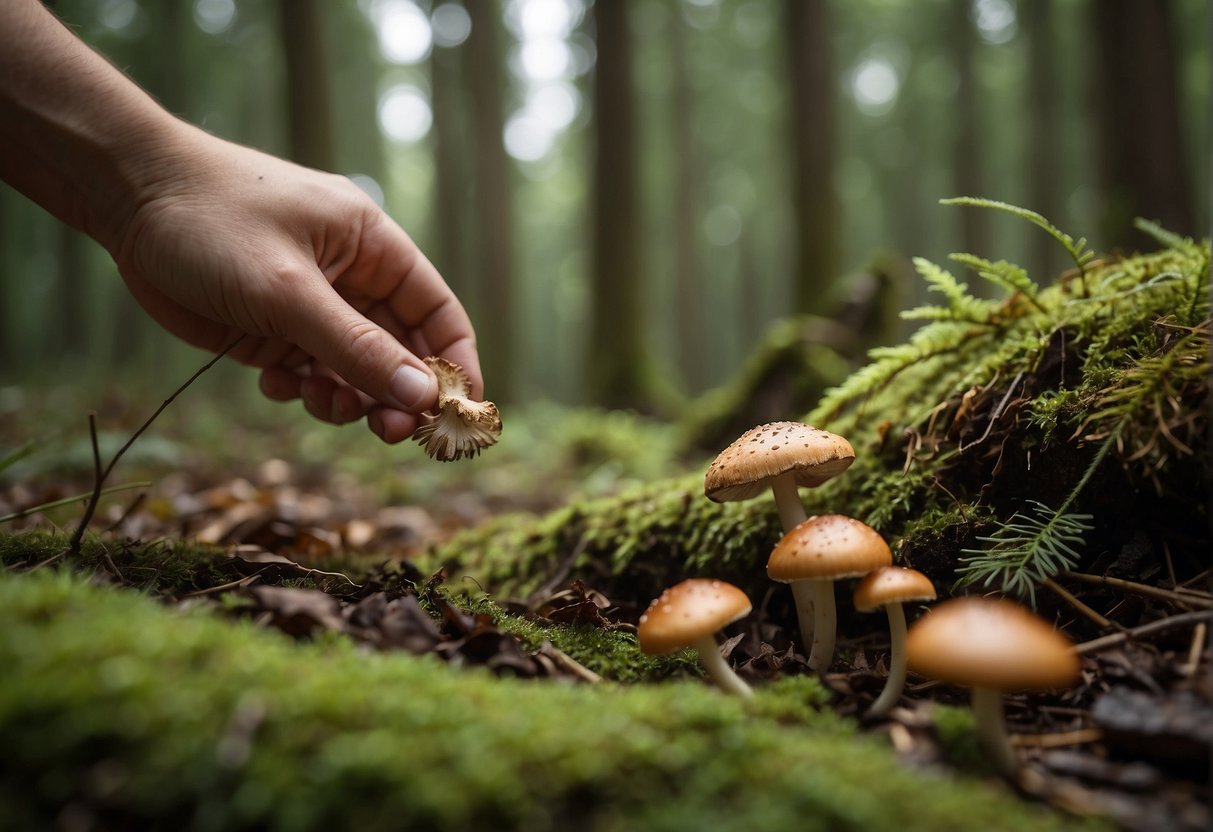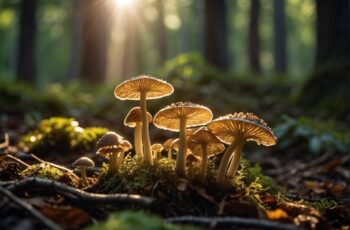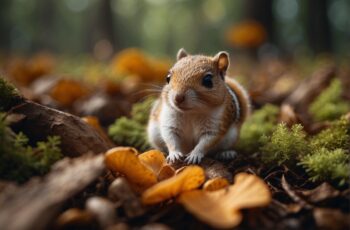Wild mushrooms fascinate both the culinary enthusiast and the outdoor adventurer. Each one offers a unique blend of flavors and potential health benefits, making them a sought-after addition to any dish. However, identifying wild mushrooms with confidence requires knowledge and care—mistaking a poisonous variety for an edible one could lead to severe consequences. A reliable wild mushroom identifier can empower you to explore the diverse realm of fungi with the assurance that you’re foraging responsibly.

Utilizing a wild mushroom identifier equips you with the ability to distinguish between the many species you may encounter in the wild. While some mushrooms like the prized morels are celebrated for their exquisite taste, others, such as certain Amanita species, are notorious for their toxicity. Identifiers vary from detailed guidebooks to AI-powered apps, each designed to build your skills in discerning a mushroom’s habitat, physical characteristics, and edibility. A good identifier not only enhances your foraging experience but ensures your safety, allowing you to engage with nature’s bounty while respecting its inherent risks.
Key Takeaways
- Understanding wild mushrooms enhances foraging safety and culinary enjoyment.
- Reliable identifiers are essential to distinguish edible from poisonous mushrooms.
- Knowledge of habitat and physical features is key to mushroom identification.
Mushroom Identification Basics
Before heading into the wild to forage mushrooms, it’s crucial that you become familiar with mushroom anatomy and the key features for proper identification.
Understanding Mushroom Anatomy
To identify wild mushrooms, you need to examine their physical structures. The cap is the topmost part of the mushroom and comes in various shapes and sizes; it’s often the most eye-catching feature. The stem or stipe provides support to the cap and can vary widely in length and color. At the underside of the cap, you may find gills, pores, or ridges, which are all critical in species identification. Some species also have a ring around the stem, which is the remnant of a protective veil that enclosed the cap when the mushroom was immature.
Key Identification Features
- Cap: Look for color, shape, and any unique textures. The cap’s surface can hint at the mushroom’s identity.
- Stem: Check for presence or absence of a ring and note the stem’s girth and height.
- Gills/Pores/Ridges: These are found underneath the cap. Gills appear as blade-like structures, whereas pores present as small holes. Ridges, less common, can also provide identification clues.
- Spore Print: This feature is akin to a fingerprint for mushrooms. By placing the cap on paper and waiting, the spores will fall and create a pattern which can be vital in differentiation.
By understanding these basic components, you’re on your way to confidently and safely identifying wild mushrooms. Always remember to refer to reliable sources like the Beginner’s Guide to Mushroom Identification and use tools like FungusID to cross-reference your findings.
Foraging and Habitat
Before venturing into the wilderness to forage for edible wild mushrooms, it’s essential to recognize the prime habitats where mushrooms thrive and understand the best practices to ensure a fruitful gathering while respecting nature’s cycles and seasons.
Prime Mushroom Habitats
Most edible wild mushrooms favor moist, shaded areas, making woodlands with ample trees your ideal starting point. Keep an eye out for:
- Deciduous forests: Here, mushrooms often grow in symbiosis with living trees or feast on the nutrients of dead trees.
- Coniferous woods: Some species prefer the acidic soil found beneath pines and firs.
- Forest floor: Look for mushrooms around leaf litter that provides a moist, nutrient-rich environment.
Use this knowledge to scout the areas where mushrooms are most likely to fruit.
Foraging Best Practices
- Respect the habitat: Do not disturb or damage the surroundings when foraging. Instead, seek mushrooms that you can easily access.
- Correct identification: Only pick mushrooms you can positively identify as safe using reliable identification resources.
- Use the right tools: Carry a basket for your bounty to allow spores to disperse and a knife to cut mushrooms, leaving roots intact.
By following these practices, you not only ensure your safety but also support the ongoing health of the mushroom habitats.
Seasonal Variations and Timing
Mushrooms have their own seasonal patterns:
- Spring: A promising time for morels and other early bloomers.
- Summer to early autumn: Peak mushroom fruiting season in many regions.
- Post-rainfall: Generally a splendid time to forage as mushrooms thrive in the moist conditions.
Set out after a period of wet weather, but always check a local foraging calendar for specifics regarding the mushrooms indigenous to your area, such as when to find your favorite wild mushrooms.
Distinguishing Edible From Poisonous

Successfully identifying wild mushrooms is crucial to a safe foraging experience. You should know the distinguishing features of both edible and poisonous mushrooms, and err on the side of caution when uncertain.
Common Edible Species
Chanterelles are a prized edible species, recognizable by their vibrant yellow-orange color, funnel shape, and ruffled edges. When foraging, make sure they have solid stems and false gills, which appear as forked folds beneath the cap rather than blade-like gills. Morels are another edible delicacy with a distinctive honeycomb cap. The Foolproof Four, including puffballs, shaggy manes, morels, and chanterelles, are typically safe bets for novices due to their unique characteristics that are hard to confuse with poisonous varieties.
Recognizing Toxins and Poisonous Species
Beware of the Amanita species, as many are highly toxic and potentially deadly. Recognize them by their white gills, skirt-like ring on the stem, and a bulbous base. False morels are another group to avoid; they boast a wrinkled, rather than pitted, cap and can contain toxic compounds. It’s imperative to note that some toxic mushrooms can cause serious harm or even death if consumed, so intimate knowledge of mushroom identification is non-negotiable.
Avoiding Mushroom Misidentification
Mushroom identification relies on careful observation. Never consume mushrooms unless you’re 100% certain of their identity. Use multiple field guides and consult with local experts whenever possible. Consider the habitat, as some mushrooms only grow in specific environments. Always perform thorough checks for key identifying features, and if in doubt, leave the mushroom behind. Remember, no wild mushroom is worth the risk of mushroom poisonings.
Additional Resources
When venturing into the world of wild mushrooms, it’s essential to have reliable resources at your fingertips. Whether you’re a seasoned forager or new to the field, these additional resources can enhance your knowledge and improve your mushroom hunting adventures.
Mushroom Identification Guides and Books
For those eager to learn about mushroom identification, a comprehensive guide or book is an indispensable tool. Books such as “Mushrooms of North America” provide detailed descriptions, vivid imagery, and vital information on species from the Cantharellus to the elusive morel mushroom. These guides help you discern edible varieties and recognize those to avoid, ensuring your foraging is both safe and enjoyable.
Local Foraging Experts and Mycological Societies
Connecting with local experts or joining a mycological society can be invaluable for enhancing your mushroom hunting skills. These societies often offer outings with experienced guides, who can offer firsthand observation and accurate identification tips for gathering mushrooms, such as the Tricholoma. By sharing insights and expertise, these local resources encourage responsible and sustainable foraging practices, creating a community of knowledgeable and environmentally conscious foragers.


